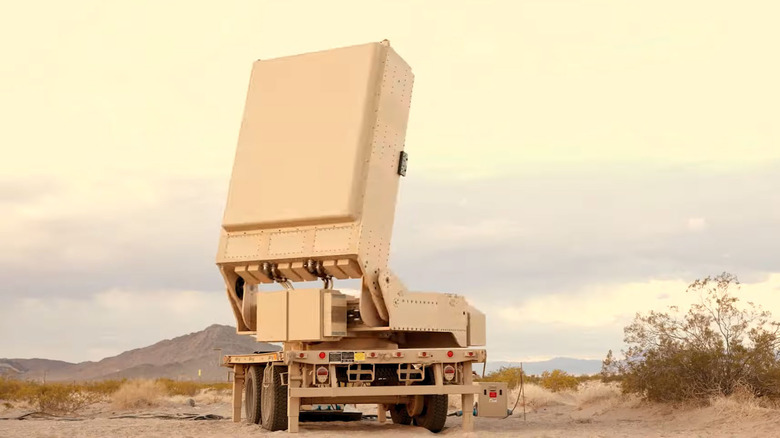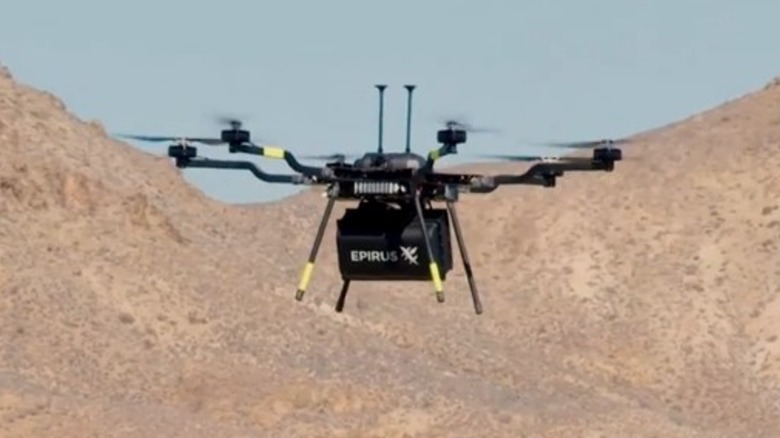Here's What We Know About The USMC's Newest Anti-Drone System
Modern warfare has changed drastically over the past few decades thanks to the introduction of drones. Technically, drones have been around since 1917, but it took nearly a century for the technology to become combat-capable. Initially, the U.S. launched drones only for intelligence, surveillance, and reconnaissance (ISR), but with the arming of the MQ-1 Predator in 2002, it all changed. Now, drones are used for various offensive missions by the U.S. and many other countries.
The conflict in Ukraine has fully demonstrated the capabilities of drones, and it's also proven why new defenses are required to diminish the threat. While the U.S. is the world's leader in satellite-controlled worldwide drone operation with aircraft like the MQ-9 Reaper, smaller, cheaper, and equally lethal options are available. Ukrainian troops use them to drop munitions on top of tanks, so there's plenty of utility with an off-the-shelf model that costs a few hundred bucks over more robust options that cost millions.
To combat the threat, the U.S. Marine Corps is testing and fielding a new system for drone defense called the Leonidas Expeditionary. This new high-powered microwave system is designed to not only take out a drone or two but to take out entire swarms of drones via high-energy microwaves. If successful, this would give the Marines a new weapon in defending personnel, vehicles, and buildings from massive drone attacks, potentially changing the landscape of modern warfare once more.
Leonidas Expeditionary
The new system is actually the fourth in a line of Leonidas products capable of taking out drones. The latest version is called the Expeditionary Directed Energy Counter-Swarm (ExDECS), and if it's like its predecessors, it will be vehicle mounted. The ExDECS wouldn't be limited to ground vehicles, however, and will likely be mountable on aircraft, including other drones. This could establish a new class of drones designed and used specifically for defense by taking the fight to enemy military drone aircraft.
At its core, each Leonidas Expeditionary system utilizes a Line Replaceable Amplifier Module (LRAM), which makes the technology scalable, either up or down. Andrew Wargofchik, a spokesperson for Epirus, the company behind the technology, told Defense News, "We like to think of them as sort of very scalable Lego blocks." Ideally, once integrated, the Leonidas Expeditionary system will function as part AI alongside manned systems, which Epirius' CEO, Andy Lowery, calls "centaur warfare."
Details on the system's full capabilities aren't available to the public, but there is some info on Epirius' website. The Leonidas system is described as a "Solid-state, high-power HPM system, utilizing Gallium Nitride (GaN) semiconductors for unmatched counter-electronics effects." Unfortunately, the system's range, power output capability, and combat effectiveness aren't available or have yet to be determined. Should the Marine's test of the technology prove it viable, there's a good chance drone warfare is on the cusp of changing forever.

